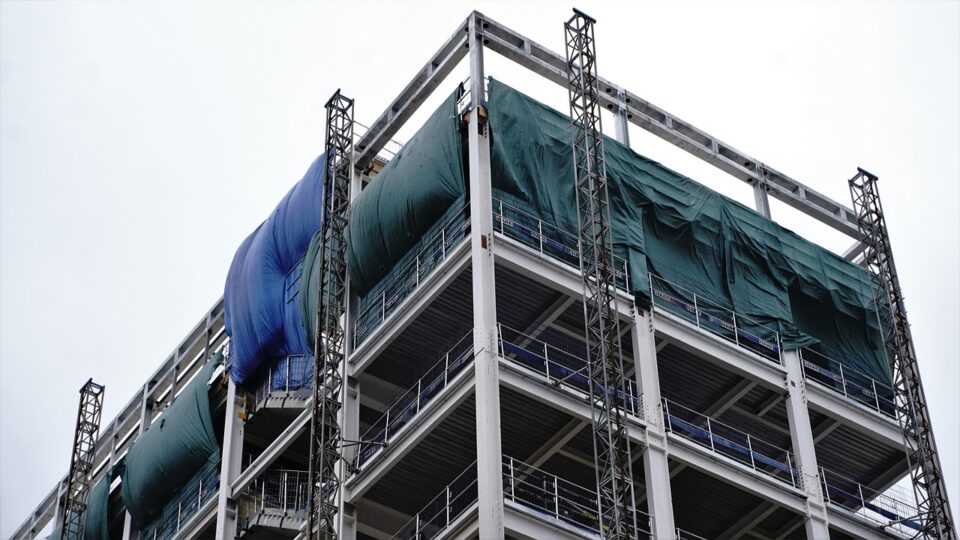Introduction:
In the field of construction, there are numerous challenges and risks that need to be addressed. One such challenge is protecting building projects from external elements such as weather, dust, and debris. Tarpaulins, also known as tarps, have emerged as a versatile solution to safeguard construction sites and enhance the overall efficiency of the construction process. In this article, we will explore the various uses of tarpaulins in construction and answer some frequently asked questions related to their application.
Tarpaulin Applications in Construction
Protection against weather conditions:
Construction projects are often subjected to unpredictable weather conditions. Tarpaulins are used to cover construction sites, protecting them from rain, snow, and excessive sunlight. They create a barrier between the site and external elements, preventing water damage, mold growth, and premature deterioration of materials.
Dust and debris control:
Construction sites generate a significant amount of dust and debris, which can be hazardous to workers and nearby properties. Tarps are employed to enclose work areas and contain dust and debris, ensuring a safer environment. They also help maintain good air quality on-site, minimizing the risk of respiratory issues.
Scaffolding enclosures:
During construction, scaffolding structures are essential for providing access to different levels of a building. Tarpaulins are used to enclose scaffolding, creating a barrier that shields workers from adverse weather conditions and prevents debris from falling outside the construction area.
Temporary shelters:
In situations where temporary shelters are required, tarps are often utilized due to their flexibility and ease of installation. They can be quickly erected to provide temporary cover for workers, equipment, and materials, protecting them from the elements.
Privacy screens:
Certain construction projects may require privacy screens to prevent unauthorized access or to maintain confidentiality. Tarps can be used as screens to restrict visibility and ensure privacy, particularly in sensitive construction areas.
Frequently Asked Questions (FAQs)
Q1. What are the different types of tarpaulin materials available for construction purposes?
A1. Tarpaulins are typically made from materials such as polyethylene (PE), polyvinyl chloride (PVC), and canvas. PE tarps are lightweight and waterproof, suitable for temporary applications. PVC tarps are more durable, providing excellent resistance against UV rays and harsh weather conditions. Canvas tarps offer high tear resistance and are often used for long-term projects.
Q2. How are tarpaulins secured on construction sites?
A2. Tarps can be secured using various methods, including bungee cords, ropes, zip ties, and metal grommets. These attachment points allow tarps to be tightly fastened to structures or scaffolding, preventing them from being dislodged by wind or other external forces.
Q3. Are tarps reusable?
A3. Yes, tarps can be reused multiple times if they are properly maintained. Regular cleaning, storage in a dry area, and inspection for any damage are essential for extending the lifespan of tarps.
Q4. Can tarps be customized for specific construction needs?
A4. Absolutely! Tarps can be customized in terms of size, color, and even branding. This allows construction companies to tailor the tarps according to their specific requirements, ensuring a professional and cohesive appearance on-site.
Q5. Are tarpaulins fire-resistant?
A5. Some tarps are manufactured with fire-resistant properties, making them suitable for construction projects where fire safety is a concern. It is crucial to check the specifications and certifications of tarps to ensure they meet the necessary fire-resistant standards.
Conclusion:
Tarpaulins have become indispensable in the construction industry, serving multiple purposes to protect and enhance building projects. From weather protection to dust control, scaffolding enclosures to temporary shelters, and privacy screens to debris containment, tarps offer versatile solutions that improve the efficiency and safety of construction sites. By utilizing different materials and customization options, construction companies can select the most suitable tarps for their specific needs. It is important to properly maintain and inspect tarps to ensure their longevity and effectiveness. With their wide range of applications, tarpaulins continue to play a vital role in construction, safeguarding projects and contributing to successful outcomes.

